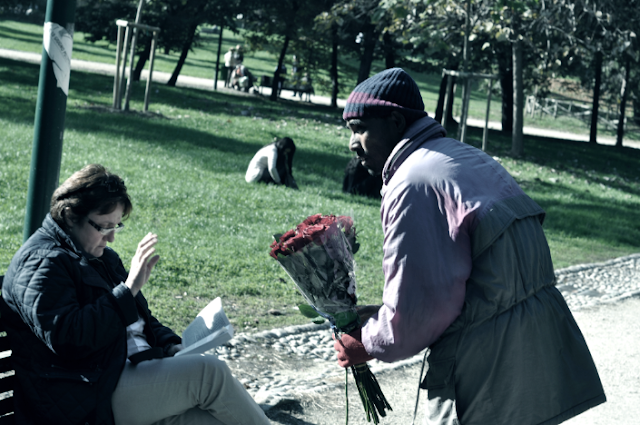Wednesday, November 28, 2012
Tuesday, November 27, 2012
TEST #03
Bertrand Russell puts it this way: The first thing to notice is that different senses have different spaces. The space of sight is quite different from the space of touch; it is only by experience in infancy that we learn to correlate them. The one space into which both kinds of sensations fit is an intellectual construction, not a datum.
After reading this words I start researching about how you can mix the cartographics maps I had done before with this new way to see the space. How was posible to isolate the different space sense in a graphic way.
Monday, November 26, 2012
Happy Places
Psychogeography, in the words of Guy Debord, is "the study of the precise laws and the exact effects of the geographical environment, consciously organized or not, based on their direct influence on the emotions and behavior of individuals". Thus, for the father of situationism, there are sad and happy places, as leading to atheist or monotheist places. This claim invite me to generate new ways to make cartography as a way to explain this concepts.
Thursday, November 22, 2012
TEST #02
The meaning of maps is consequential spatial arrangement; it is the fact that objects isolated in real perceptual experience are not important. Cartographers are not concerned with the nature of objects per se, but rather with a particular set of relations among those objects. The reader must reconstruct these relations in his mind for the map to have meaning.
Thursday, November 15, 2012
Wednesday, November 14, 2012
TEST #01
It is difficult to "picture" knowledge if it indeed lacks form as this conception suggests. Yet a simple cartographic illustration of how knowledge exists without specific form should clarify the situation. ¥e may know where certain places are, or how certain areas are arranged, even though we have not actually seen them and have only derived such knowledge from maps. Yet if we were asked to escribe the graphic characteristics of the maps from which we derived the knowledge, it is unlikely that we would be able to recall line weights, type styles, or colors. Yet we know the relations that were depicted, regardless of the form of the original marks. Once we assimilated those marks and converted them into tacit knowledge, they lost their form. However, we can retain the relations of interest to us, that is, the structures of the maps from which they were obtained.
Barbara Petchenik,Cognition in Cartography, Newberry Library
Sunday, November 11, 2012
Friday, November 9, 2012
Thursday, November 8, 2012
Wednesday, November 7, 2012
Tuesday, November 6, 2012
Saturday, November 3, 2012
Friday, November 2, 2012
Thursday, November 1, 2012
Subscribe to:
Comments (Atom)









































